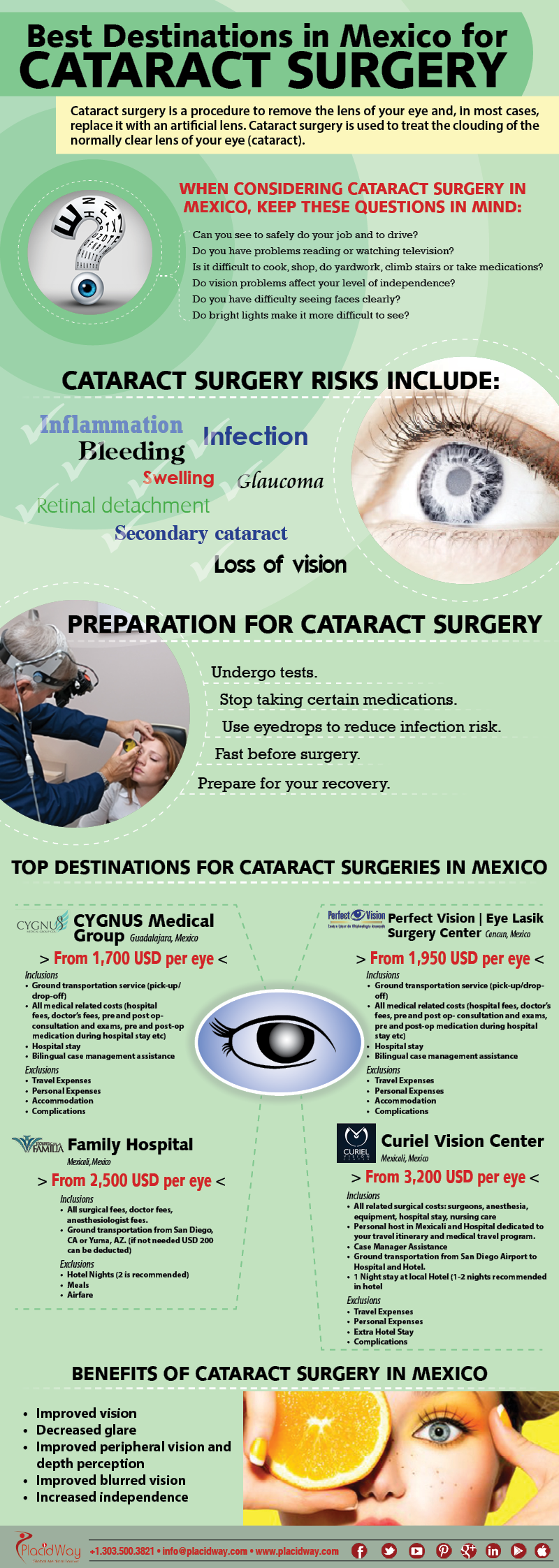Examining The Pros And Cons Of Traditional Cataract Surgical Treatment Contrasted To Laser-Assisted Techniques
Examining The Pros And Cons Of Traditional Cataract Surgical Treatment Contrasted To Laser-Assisted Techniques
Blog Article
Content Written By-McGraw Crawford
When contemplating the option between typical cataract surgical treatment and laser-assisted methods, you may find yourself weighing the benefits and drawbacks each technique provides. The decision surpasses the surface level of cost and accuracy, diving right into the world of long-term end results and client complete satisfaction. As you browse with the intricacies of these 2 methods, it becomes essential to understand the nuanced details that can significantly affect your visual quality and general experience. Keep tuned to reveal the crucial variables that will assist your decision-making process in this important element of eye treatment.
Standard Cataract Surgical Treatment Advantages And Disadvantages
When thinking about typical cataract surgical treatment, you may discover that it's a reputable and widely-used strategy. In this procedure, a doctor makes a little incision in the eye and utilizes ultrasound to separate the cloudy lens prior to removing it. As soon as the cataract is eliminated, a man-made lens is placed to restore clear vision.
One of the primary advantages of typical cataract surgical procedure is its record of success. Many individuals have actually had their vision considerably improved through this procedure. Additionally, traditional surgical procedure is frequently covered by insurance, making it a more easily accessible option for several people.
However, there are some disadvantages to typical cataract surgery as well. Healing time can be longer compared to more recent techniques, and there's a somewhat greater threat of issues such as infection or inflammation. Some patients may also experience astigmatism or require analysis glasses post-surgery.
Laser-Assisted Techniques Advantages And Disadvantages
Exploring laser-assisted strategies for cataract surgical procedure unveils a modern approach that uses laser innovation to execute key steps in the treatment. Among the primary benefits of laser-assisted cataract surgical treatment is its accuracy. The laser permits extremely precise incisions, which can cause far better aesthetic end results. Additionally, the use of lasers can decrease the amount of ultrasound energy required during the surgery, potentially reducing the danger of issues such as corneal damages.
On the drawback, laser-assisted methods can be more pricey contrasted to conventional techniques. This expense mightn't be covered by insurance, making it much less accessible to some clients.
cataract surgery under local anesthesia is that not all cataract specialists are trained in laser technology, which can restrict your options for selecting a doctor.
Finally, while the laser can automate certain elements of the procedure, the surgical procedure still needs a skilled cosmetic surgeon to guarantee effective outcomes.
Relative Evaluation of Both Techniques
For a detailed understanding of cataract surgical treatment techniques, it's necessary to carry out a relative evaluation of both standard and laser-assisted techniques.
Conventional cataract surgery involves manual incisions and using handheld tools to break up and get rid of the over cast lens.
On the other hand, laser-assisted cataract surgical procedure uses innovative innovation to develop specific cuts and break up the cataract with laser energy before removing it.
In terms of accuracy, laser-assisted techniques provide a higher degree of precision contrasted to standard approaches. Making use of lasers permits modification of the treatment based upon each person's eye composition, potentially leading to far better visual outcomes.
Nonetheless, laser-assisted cataract surgery often tends to be a lot more pricey than standard surgery, which might restrict accessibility for some patients.
While both techniques are effective in bring back vision damaged by cataracts, the choice between typical and laser-assisted methods usually relies on aspects such as price, accuracy, and individual patient requirements.
Consulting with your ophthalmologist can aid determine the most appropriate method for your cataract surgical procedure.
https://www.ophthalmologytimes.com/view/living-forward-we-still-have-to-understand-backward
To conclude, when determining between conventional cataract surgical treatment and laser-assisted techniques, take into consideration elements like cost, precision, and individual requirements. Conventional surgical procedure supplies a tried and tested track record and insurance protection but might include longer recuperation times. Laser-assisted techniques offer greater precision and personalization however can be much more costly and not constantly covered by insurance coverage. Eventually, the option between both methods depends on what is crucial to you and your particular scenario.
